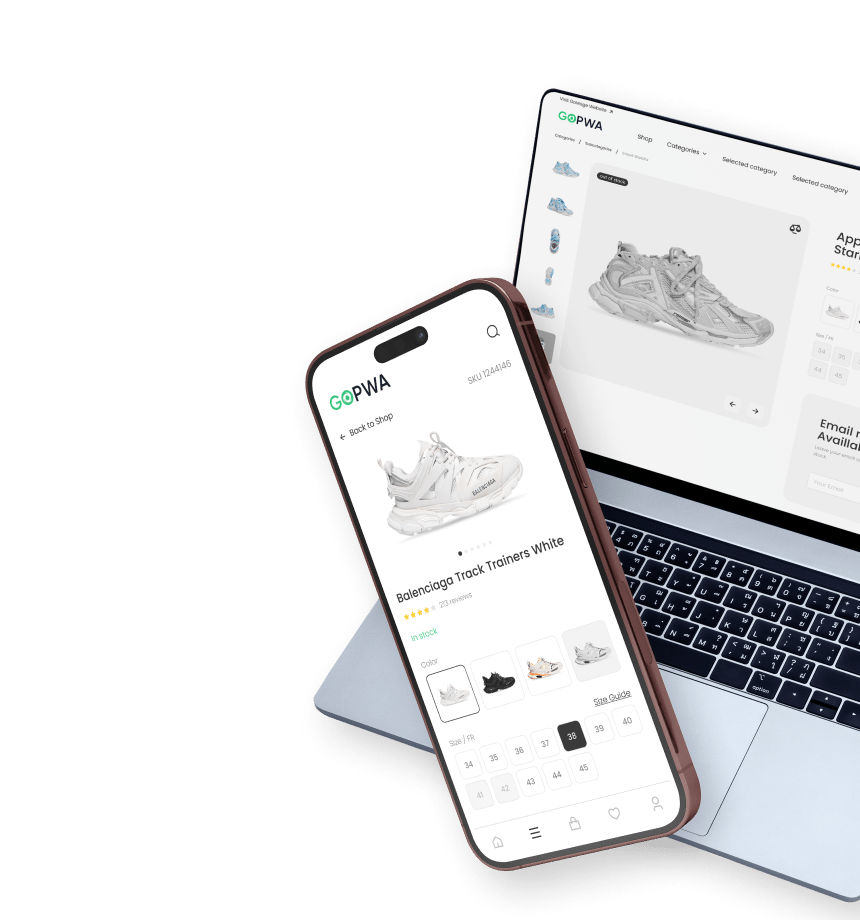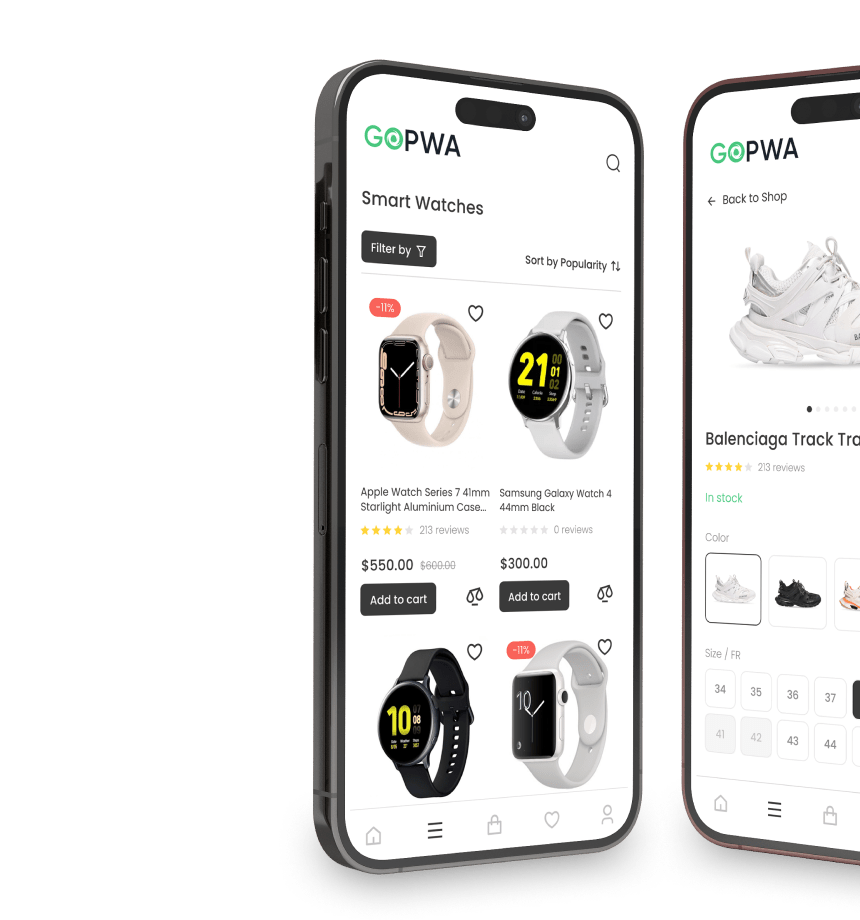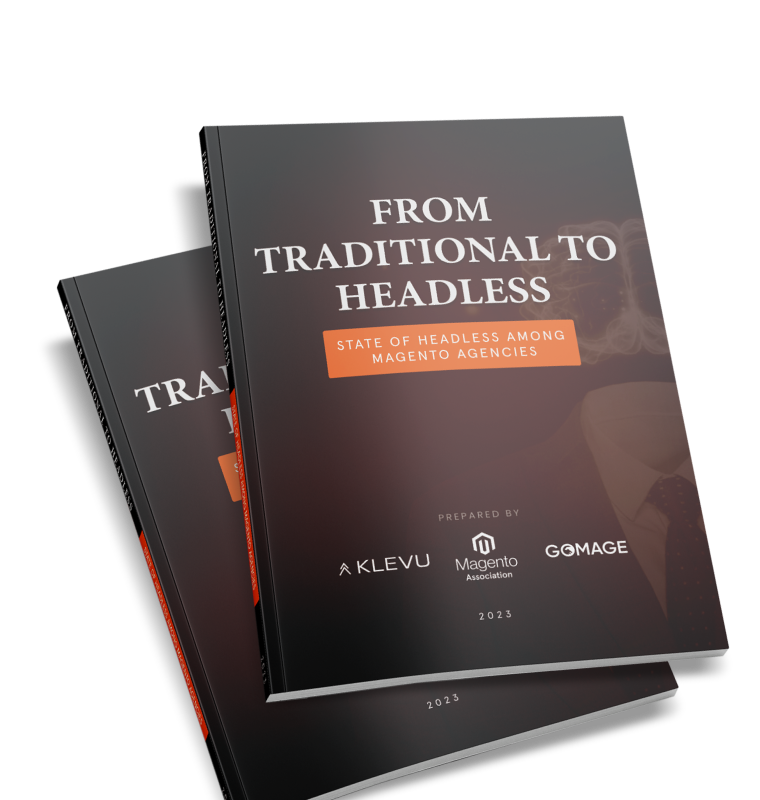In today’s digital era, where online shopping has become an integral part of our lives, a well-designed and user-friendly eCommerce website is the cornerstone of any successful online business. It serves as the virtual storefront, enticing visitors, and converting them into loyal customers. However, behind the captivating visuals and seamless functionality lies an important consideration that every business owner must address: the cost of eCommerce website design.
Understanding the true cost of designing an eCommerce website is crucial for businesses to make informed decisions about their online presence. From the initial planning and design stages to the implementation of essential features and ongoing maintenance, every aspect carries its own price tag. This article aims to provide a comprehensive guide that sheds light on the various factors influencing the cost of eCommerce website design, enabling businesses to navigate the process with confidence.
Join us as we delve into the intricacies of eCommerce website design cost, uncovering the key elements that determine the expenses involved.
Calculating eCommerce website design cost
When it comes to estimating the cost of your eCommerce website, taking a strategic approach is crucial. By examining the tools, solutions, and services required to meet your business’s unique needs, you can accurately calculate the budget needed to bring your online store to life.
To begin, let’s break down the key elements that make up your online store’s foundation: the domain name, eCommerce platform, add-ons, supporting solutions, and infrastructure providers. Each of these elements plays a vital role in your website’s functionality and success. By assessing them individually, you can gain a clearer understanding of their associated costs and create an accurate budget for your eCommerce venture.
To define your specific eCommerce business needs, start by considering the following fundamental aspects:
- The intended amount of traffic to host
- The size of inventory
- Business model (B2B or B2C)
- Your target audience
- Your intended selling channels
- Your business structure
- Your expertise in website design and development
- The intended types of products and services
Web Design Create a visually captivating and highly functional online store that drives conversions and sets you apart from the competition.

eCommerce website costs
Before diving into the calculations of your website building expenses, it’s essential to decide on the approach that best suits your needs. There are a few options to consider, including using website builder software, hiring a web designer to customize your eCommerce website design, or entrusting the entire development process to a web development agency.
The path you choose and the resulting costs will largely depend on the scale of your business. Whether you’re setting up a small online store, running a medium-sized business, or operating an enterprise, this decision will significantly impact your eCommerce website budget.
Let’s explore the different approaches available and their associated costs.
- Website builder software
This option provides a user-friendly platform that allows you to build your website using pre-designed templates and drag-and-drop functionality. It offers an affordable solution for small-scale eCommerce ventures, with costs primarily associated with subscription fees, domain registration, and potential add-ons or premium features.
- Hiring a web designer
If you prefer a customized eCommerce website design tailored to your unique brand and requirements, working with a professional web designer is a suitable choice. Costs will vary based on the complexity of your design and the expertise of the designer. Typically, you’ll incur expenses related to web design services, domain registration, hosting, and any additional features or functionalities.
- Web development agency
For larger-scale businesses or enterprises seeking a comprehensive and fully customized solution, engaging a web development agency is a viable option. This approach ensures a team of professionals handles every aspect of your eCommerce website development. The costs associated with a web development agency will encompass services such as design, development, testing, deployment, ongoing maintenance, and hosting. Pricing structures may include fixed fees or hourly rates, depending on the agency.
By carefully considering your business requirements, scalability, and budget limitations, you can make an informed decision about the approach that best aligns with your goals. Keep in mind that the chosen approach will significantly impact the overall cost of your eCommerce website.
For solopreneurs, there is a practical option to consider when establishing an eCommerce presence: building an eCommerce storefront on well-established online marketplaces such as Amazon, AliExpress, or eBay. In this scenario, solopreneurs can create merchant accounts on these platforms and easily set up product pages by configuring basic storefront templates using visual website builders. This process typically takes only a few minutes and requires no technical website design skills or additional accessories.
At this initial stage, the only costs you’ll likely incur as part of your eCommerce website budget are the subscription charges for your merchant account. These charges are typically based on the number of listed items. Alternatively, the platform may allow you to join for free but then deduct commissions from your sales.
As a result, your projected eCommerce website pricing for solopreneurs falls within the range of $0 to $500+ per month, with the potential for additional expenses as your sales numbers increase.
For small to medium-sized businesses, selecting the right eCommerce solution involves considering end-to-end Software-as-a-Service (SaaS) eCommerce platforms or the WooCommerce plugin, which operates within the WordPress framework.
SaaS eCommerce platforms such as Shopify, Wix, BigCommerce, and Squarespace offer comprehensive solutions that include dynamic website builders, customizable eCommerce website themes, and a full range of store management functionalities. These platforms often start at around $30 per month, providing businesses with the tools to build their online stores using pre-built templates and intuitive What-You-See-Is-What-You-Get (WYSIWYG) editors. This process typically takes several hours. While some website templates are available for free, advanced feature-rich templates can cost between $60 and $200 each.
Medium-sized businesses seeking greater flexibility may opt for WooCommerce, a free, open-source eCommerce platform that integrates seamlessly with WordPress. While WooCommerce is compatible with drag-and-drop WordPress page builders, unlocking its full potential often requires custom coding. Therefore, hiring an experienced website designer for custom development may be necessary. Freelance professionals offer varying hourly rates, ranging from $30 to $45 for beginners, $50 to $100 for intermediate-level experience, and $125 or more for the most advanced WooCommerce developers.
When factoring in the cost of purchasing premium WooCommerce themes, an SSL certificate, and other necessary components, the total development cost for a medium-sized eCommerce store typically falls within the range of $1,500 to $6,000.
When it comes to enterprises, the costs associated with eCommerce website development can be significant. Enterprises often engage full-service web development agencies to handle the complex task of setting up and maintaining custom features required for managing extensive product catalogs, unique customer journeys, omnichannel experiences, and handling high volumes of traffic.
To achieve this level of customization, enterprises typically rely on self-hosted open-source eCommerce platforms like Adobe Commerce (formerly Magento), WooCommerce, and PrestaShop. These platforms provide the flexibility and scalability necessary to meet the specific needs of large enterprises.
The process of coding the entire eCommerce website design from scratch, building custom functionalities, integrating third-party services, and deploying the website on self-hosted environments can take web development agencies over 200 hours of work. The expertise and effort involved in creating a tailored eCommerce solution for enterprises contribute to the higher costs associated with these projects.
In total, building an enterprise-level eCommerce website design can accumulate costs ranging from approximately $10,000 to $30,000.
It’s important to note that the costs mentioned here are general estimates, and the final pricing will depend on various factors such as the complexity of requirements, the level of customization needed, and the specific services provided by the chosen web development agency.

Ongoing costs
Ongoing costs include costs for domain and hosting, interactive multimedia, site maintenance, and SSL certificate. Let’s dive into each of these.
Domain & hosting
The price of a domain for an eCommerce site can vary based on several factors. Key considerations include the top-level domain (TLD) you choose, the registrar you use to purchase the domain, and whether the desired domain is available for purchase.
Typically, standard TLDs like .com, .net, or .org are widely used and generally have competitive pricing. However, it’s worth noting that certain popular TLDs specifically tailored for eCommerce, such as .store or .shop, may have higher costs due to their popularity among businesses in the eCommerce industry.
Registering a domain for your eCommerce website can be as affordable as $0.50 to $15 annually. Considering the long-term nature of running an eCommerce site, opting for the maximum registration period of 10 years is a wise choice. This decision would increase the total cost to approximately $50 to $150.
The cost of website hosting can vary significantly, with prices ranging from as low as $2.49 per month to $1,000 or more. The actual cost depends on various factors, including the amount of traffic your eCommerce store receives and any additional services you require, such as automated backups.
There are two primary types of hosting commonly utilized by eCommerce brands:
- SaaS eCommerce platform hosting
Platforms like Shopify provide a comprehensive hosting solution as part of their services. With these platforms, you don’t need to worry about installing, managing, or hosting a domain on your own. All the necessary hosting infrastructure is included in your monthly subscription fee. However, you will still need to separately purchase and register a domain name.
- Self-hosted eCommerce website
Some eCommerce website builders, such as WooCommerce are free to use. However, to handle your website files and acquire a domain, you will need to create an account with an eCommerce hosting provider. One disadvantage of self-hosted solutions is that as your eCommerce store expands and attracts more traffic, you may need to upgrade your hosting plan to handle the increased volume effectively. This can result in hosting costs ranging from $1,000 to $2,000 or more per month for high-volume websites.
Interactive multimedia
Flash and multimedia components are effective tools for enhancing the visual appeal of your website, offering high levels of customization. However, it’s important to be mindful of certain considerations.
Flash, although customizable, has a limitation: search engines cannot read its code. Therefore, if you choose to use Flash, it is advisable to employ it selectively rather than extensively throughout your website’s core.
Videos, on the other hand, are valuable multimedia elements that can complement product lists, images, and descriptions. They provide customers with a clearer understanding of the features and benefits of each item. Additionally, videos can be utilized for advertising purposes on platforms like YouTube and other social media channels, attracting new clients with engaging content.
Site maintenance
eCommerce website maintenance involves addressing any issues that arise, adding new components as needed, and ensuring overall functionality. While website maintenance may come with a cost that exceeds your initial expectations, its advantages may not be immediately apparent. Dissatisfied online consumers tend to share their negative experiences with friends and relatives. Therefore, neglecting timely maintenance could result in potential problems such as glitches in the checkout process, graphic errors on product photos, or even an inflexible website.
SSL certificate
HTTPS protocol ensures a secure and encrypted connection between a website and a browser, facilitated by an SSL certificate, which acts as a digital signature. The SSL or TLS cryptographic protocol is employed to encrypt the data transmitted.
For eCommerce websites, the SSL certificate plays a critical role in protecting users’ personal information and other sensitive data from potential interception by third parties. The certificate’s presence is essential to maintain the confidentiality and integrity of the data exchanged during online transactions.
Consulting Get your website back on track to high profits. We’ll identify what’s wrong with your website, choose the best tools, and fix any issues keeping your business from growing.

Factors determining eCommerce website costs
Branding
In today’s era, authenticity is paramount, and brands must strive to be genuine in order to establish meaningful connections with their audience. Maintaining consistent branding across various channels has the potential to boost revenue by a substantial margin, ranging from 10% to 20%.
Solopreneurs and small eCommerce stores often handle their branding internally, leveraging the assistance of automated brand design tools. These tools include web-based domain name generators for finding suitable domain name ideas, website builders offering pre-built templates for creating eCommerce website designs, AI-driven logo makers for logo development and design, and social media mockup generators for creating illustrations for social media platforms.
Many of these branding tools offer free versions with limited features, but unlocking the full range of design capabilities often requires upgrading to premium plans. For example, web-based logo makers like Tailor Brands and Looka typically range from $3 to $200, while custom logo design services such as Crowdspring can cost around $299. Design tools like Canva and Adobe Illustrator, which are used for various design purposes, may cost between $10 and $32 per month. Additionally, templates sourced from platforms like Creative Market and GraphicBurger can be acquired for prices ranging from $2 to $500.
When combining the costs of these branding tools and resources, the overall expenses can range from approximately $100 to $1,000 or more.
Medium-sized eCommerce sites often opt to outsource their branding tasks to professional consultants. They collaborate with freelance or contracted graphic designers, product designers, UI/UX designers, animation designers, and other specialists. These professionals are responsible for developing a cohesive corporate identity through various design elements, including social media templates, logo design, brochure design, eCommerce website design, and branded domain names.
These consultants are typically compensated on a project basis, with the average rate for experienced professionals ranging from approximately $100 to $150 per hour. This equates to an estimated cost of around $4,500 to $15,000 for a comprehensive range of visual design projects needed for branding.
Large businesses adopt a more streamlined and rigorous approach to branding strategy. Rather than engaging multiple professionals, they prefer to work with a single turn-key branding agency that handles both their visual design assets and brand communication systems.
These branding agencies are typically multi-disciplinary, consisting of highly specialized designers, copywriters, PR experts, strategists, and art directors who collaborate to fine-tune every aspect of the branding process. In certain instances, they may even offer training to enterprise employees on their responsibilities in implementing the branding workflows.
The outcome of this comprehensive branding strategy is an enhanced relationship with customers. The fees charged by these branding agencies can range from approximately $30,000 to $80,000. The investment reflects the thoroughness and expertise involved in developing a cohesive and impactful brand identity for large businesses.
Visual design
Web design styles are commonly categorized into four main types: Simple, moderately stylized, high-end, and world-class.
Simple websites have a clean and functional design that meets expectations without many surprises. They provide a solid foundation for a website.
Moderately stylized sites take additional liberties and make more use of available space. This may include incorporating extra graphics, a more vibrant color scheme, or other supplementary elements.
High-end sites are known for their polished and sophisticated appearance. They feature clean-cut designs with high-resolution images and color schemes appropriate for the website’s target demographic.
World-class websites aim to surpass the competition by utilizing interactive elements, high-quality images, videos, and a range of intuitive features. These websites not only offer users a perfect shopping experience but also have the potential to earn recognition and awards.
While aiming for a world-class website comparable to industry giants like Amazon can lead to higher eCommerce website design pricing, it is essential to align your design ambitions with your business goals and budget. If your primary objective is to serve your customer base effectively, a simple or moderately stylized website may suffice.
The price of eCommerce website design can vary greatly depending on factors like design complexity, customization level, store size, and the expertise of designers or agencies involved.
For small to medium-sized businesses or solopreneurs using website builders or pre-built templates, the cost can range from a few hundred dollars to a couple of thousand dollars. This primarily includes expenses related to domain registration, website builder subscriptions, and any additional features or add-ons.
For medium-sized businesses seeking more customized solutions, the cost of eCommerce website design can range from a few thousand dollars to tens of thousands of dollars. This involves engaging professional web designers or agencies to create a unique and tailored website design, considering factors such as branding, user experience, and functionality.
For large enterprises or businesses with complex requirements, the cost of eCommerce website design can reach even higher figures. This typically involves working with specialized design agencies or teams, conducting extensive research and strategy development, and implementing advanced features and integrations. The cost can range from tens of thousands to hundreds of thousands of dollars, or even more, depending on the scale and complexity of the project.
Responsive design
Having a responsive design is essential for any modern eCommerce website. With the increasing number of customers accessing websites through mobile phones, tablets, and other devices, accommodating them is crucial. Responsive design ensures that your site automatically adapts to provide an optimal browsing experience regardless of the device being used.
Implementing responsive design allows customers to have a seamless shopping experience with a well-designed layout and full functionality, whether they are browsing on a smartphone, tablet, or other devices.
Lean about the state of headless in eCommerce

Website copy
Effective copywriting is essential for any website, including eCommerce sites. Unlike other types of websites, eCommerce websites typically require fewer text-only pages. The key pages to focus on are the terms and conditions, privacy policies, and other important details.
Furthermore, you have the flexibility to create pages that specifically target different segments of your market. For example, you can customize pages to cater to a specific geographic area or demographic.
The cost of copywriting will depend on the specific content and requirements of your pages. Shorter pages with minimal text and no images will generally have lower copywriting charges. However, longer pages with 3000 words, interactive elements, subheadings, JavaScript inserts, and custom programming will involve additional design costs for your eCommerce website.
Functionality
Building an eCommerce website requires incorporating essential features such as shopping carts, checkout procedures, consumer identity protection, and personalization. Additionally, you may want to showcase multiple images or instructional videos for certain products. Legal requirements may necessitate including specifications papers, MSDS sheets, and other relevant materials in product listings. To determine the optimal approach for your specific website, it is advisable to consult with a web designer or developer. However, it is beneficial to consider these concepts upfront.
CMS
A content management system (CMS) is an application used to manage content, allowing multiple users to create, update, and publish content. It utilizes templates and a database to display content in a presentation layer, similar to a website.
While cost is important, it should not be the sole deciding factor when selecting a CMS for your eCommerce site. The primary focus should be on the functionality you require. Consistency in the appearance of your categories and product pages, as well as the ability to easily add new ones, is essential for strengthening your brand and providing a seamless user experience.
Evaluate the offerings of different providers, consider your future goals, and choose the solution that aligns best with your needs, even if it may involve a slightly higher cost.
Database integration
Database integration is essential for eCommerce businesses as it allows for centralized storage of customer, employee, and product data. It enables your organization to have a shared repository of corporate information, accessible to the entire team.
Moreover, database integration is crucial for providing a personalized experience to your clients. It allows users to register on your website, set preferences, and enjoy a customized browsing experience. Storing credit card details can also be facilitated through database integration, eliminating the need for customers to repeatedly enter their information. Additionally, it can be used to securely store usernames and passwords for a seamless login experience.
eCommerce SEO
Attracting customers who use search engines is vital for generating more revenue and sustaining a steady flow of new and repeat customers.
However, implementing eCommerce SEO requires consistent investment. Achieving and maintaining a high ranking in search engines demands ongoing efforts to outperform competitors and remain visible in Google’s search results.
SEO is not a one-time task; it requires continuous work to attract and retain new customers. Failing to prioritize SEO efforts can result in falling behind competitors and missing out on valuable opportunities.
Closing thoughts
Determining the exact pricing for an eCommerce website is challenging as it varies based on individual business requirements. However, by considering your company, goals, and desired outcomes, you can estimate a general range.
Remember to align your design choices with your business goals and prioritize factors that will contribute to a seamless user experience, effective branding, and long-term success. By investing in a well-designed and optimized eCommerce website, you can create a platform that attracts customers, drives sales, and positions your business for growth in the competitive online marketplace.







